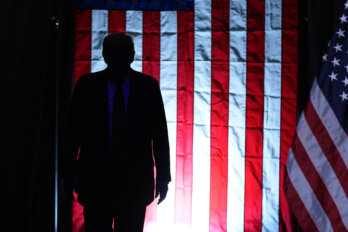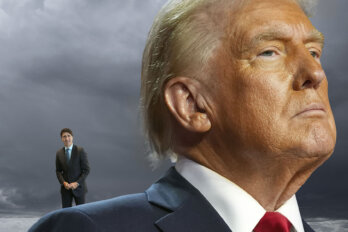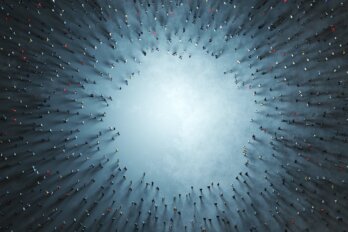After losing the by-election in the Toronto–St. Paul’s riding in June, Justin Trudeau’s Liberals took another blow in the LaSalle–Émard–Verdun (LÉV) by-election on September 16. Like St. Paul’s, LÉV was once considered a stronghold of the Liberals: in the 2021 federal election, the Liberal Party had won this southwestern Montreal riding by more than twenty percentage points.
These two crushing defeats, along with over a year’s worth of polling data, reveal a hard truth for the Liberals—they can now lose anywhere in the country. There are no safe seats left for the party.
All the warning signs have been flashing incessantly for over a year. The latest projections show the wear and tear of nearly a decade in power, and the widespread dissatisfaction with the prime minister could lead the Liberals to the brink of collapse in the next general election. This is not an editorial comment but a cold, factual analysis of the available data.
We have witnessed such a scenario before, with the Progressive Conservatives in 1993. They went from the record majority they’d won nine years prior to being almost completely wiped out of the electoral map, with only two survivors out of 157 MPs.
Trudeau’s Liberals have not yet reached this level of debacle. Nevertheless, the most recent 338Canada federal updates put the Liberal Party around the sixty-seat mark nationally, but such a tally would be far behind that of Pierre Poilievre’s Conservatives, who are projected to reach the 220-seat range. Should it materialize next year, Poilievre would lead the largest parliamentary caucus in Canadian history (in absolute terms).
These numbers are theoretical, however. In reality, the Liberals’ situation could be even worse than the data suggests.
For the Liberals, the by-election in LÉV represented a near sixteen-point drop in support compared to the 2021 election results and a net loss of nearly 12,000 votes in that riding. Yet federal polls in Quebec show that support for the Liberal Party has slipped between seven and ten points in the province. The by-election results, in other words, seem a more dire snapshot of the party’s standing than what the federal polls are showing us. What should we make of this?
When the enthusiasm of a party’s voters falters, it can lead many of them to simply stay home. In such situations, electoral catastrophes can occur. We saw such a scenario unfold in the 2018 Quebec election. End-of-campaign polls gave Philippe Couillard’s Quebec Liberal Party between 28 percent and 32 percent of province-wide support. On election night, it didn’t even reach 25 percent of the popular vote.
Did the pollsters get it wrong? That’s what it looked like at first sight, but more thorough studies of the results revealed some important nuances once the dust had settled.
Data by electoral districts indicated that the ridings where turnout had fallen the most compared with the previous provincial election (of 2014) were all traditionally Liberal ridings. Polls had measured a fair estimate of “theoretical support” for the Quebec Liberal Party, but on election day, Liberal voters just didn’t turn out. Low voter enthusiasm had led to voter depression.
If such a scenario were to occur across the country in the next federal election, particularly in the face of polls and projections that put the Conservatives in “super-majority” territory, it is entirely plausible that the Conservative lead would get even stronger on election night than in the polls.
In Quebec, we must now consider an increasingly plausible scenario: the Bloc Québécois, already projected in the lead among the francophone majority, sweeping almost all of the province’s rural and suburban seats, pushing the party past the forty-five-seat mark (for the first time since 2008) and challenging the Liberals for the spot of official opposition in Ottawa. Imagine, if you will, Bloc Québécois leader Yves-François Blanchet being offered to move to Stornoway, the official home of the leader of the opposition, and hoisting a Quebec flag in the uppity Ottawa ward of Rockcliffe Park, where numerous consuls and ambassadors reside.
Apart from the uproar that such an outcome would cause in English Canada, it would set the stage for a much spicier 2026 Quebec election campaign with a strong referendum flavour, something that Parti Québécois leader Paul St-Pierre Plamondon seems to be fervently hoping for, if his speech to the Parti Québécois National Council in Drummondville last April is anything to go by. “One thing is certain: our moment will arrive sooner than we think, meaning not at some long-term idealized date but in a few years—before the end of the decade. We will indeed experience a third referendum,” Plamondon said in this fiery speech. Based on polling from August, Quebec voters do not have a strong appetite for the new referendum, but they do measure the Parti Québécois ahead of its rivals at the provincial level, with the incumbent Coalition Avenir Québec in trouble and the Quebec Liberals in single digits among francophones.
Add to this mix a federal Liberal Party in free fall, a Conservative Party poised to sweep English Canada, and a Conservative leader—Poilievre—who remains deeply unpopular in Quebec. A window of opportunity, however theoretical, appears to be opening, in both Ottawa and Quebec City, for the main sovereigntist parties—a phenomenon we haven’t seen in decades.
We may be on the cusp of a new era of national unity debate. As the saying goes, history doesn’t repeat itself, but it often rhymes. Get ready for constitutional poetry and some referendum limericks.





